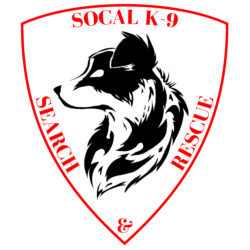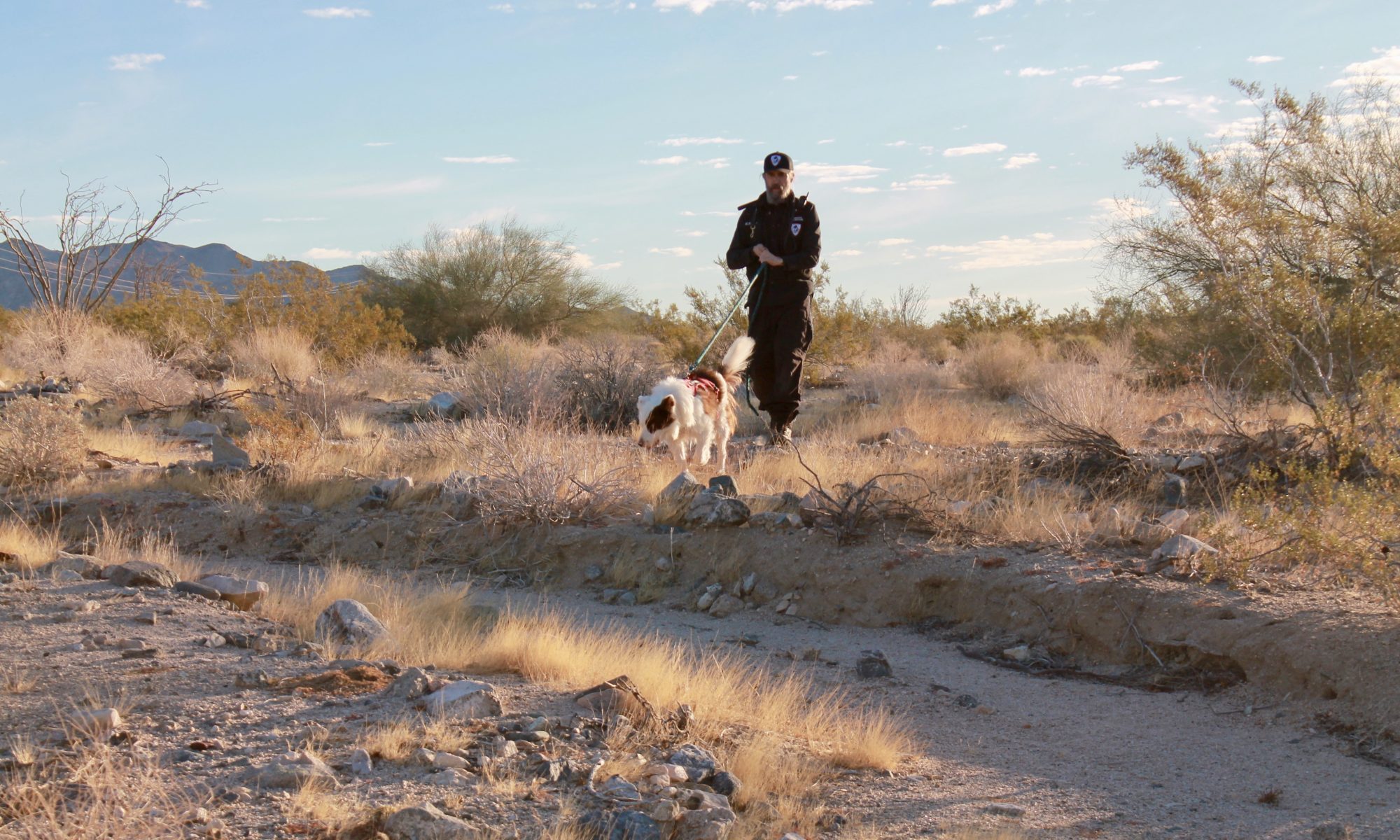How many people go missing every year?
According to the National Missing and Unidentified Persons (NamUS) database, which is funded by the U.S. Department of Justice, more than 600,000 people go missing annually. California tops the list, followed by Florida and Texas. According to the 2019 documentary, Missing 411: The Hunted, it is reported that as many as 1,200 individuals have disappeared in our national parks and wilderness areas, but also admits that number may be under-reported. From missing hikers, children or Alzheimers patients wandering off, these cases are not often publicized nor are they often looked for in the initial 72 hours when live find rescue is most likely to occur.
What is live find K-9 search and rescue?
K-9 search and rescue teams specialize in two key areas: detecting survivors (live find) or detecting people who are deceased (human remains/cadaver). A K-9 Search & Rescue team uses the assistance of a trained dog and handler team to find the missing person(s).
How many search and rescue groups are there in California?
There are about 100 search and rescue volunteer groups in the entire state of California. Of those groups, less than 20% of those have K-9’s.
What is the role of the K-9 on the team?
Experts estimate that a single search and rescue (SAR) dog can accomplish the work of 20-30 humans. In fact, dogs are outfitted with more than 200 million scent receptors and can pick up a scent from a mere handshake. How far a dog smells depends on conditions such as wind and type of scent, but they have been reported to smell objects and people over 12 miles away. A dog and handler team together can search in any environment and are not limited by noise, equipment or distractions. Due to their heightened sense of smell, dogs can detect live human scent, even if a survivor is buried deep in rubble.
Do you train dogs for police departments, fire departments, or private individuals?
We own, handle and train our own dogs for this work. In addition to this, we also train private individuals in training their own dogs for basic obedience, behavioral training, service and working dogs to raise funds to continue offering free services to our victims.
How long does it take to train a search and rescue team?
Training a search and rescue team requires both handler and dog training that typically takes 12-18 months to complete.
What are the best search and rescue dog breeds?
Teaching a dog to search using his nose instead of his eyes and ears is a great workout for every dog breed! 60% of a dog’s brain is activated while using their nose. Search and rescue is a great game for any dog at home. That said, for search and rescue work in the field, your dog must have a high play drive and a willingness to learn, be nonaggressive toward people and dogs, healthy, resilient, and have strong nerves. The most commonly used dog breeds for this type of work include the bloodhound, the border collie, the German Shepard, Newfoundlands, Basset Hounds, Labrador Retrievers, Beagles, St. Bernards, and Belgian Malinois.. but that said, other breeds can be used as well.
What are the characteristics of a search dog handler?
In reality it takes a lot of time, money, and effort. The work is demanding and often dangerous for the dog, the handler, and the flanker, and it’s almost always under very unpleasant conditions. A handler must be physically fit enough and psychologically strong enough to put in long hours in poor weather while a family is hoping you will bring their loved one back to them. You don’t always come back with good news; often you come back with no news at all. Still, the work can be very rewarding and is even enjoyable in its own right.
How are you called to respond to a search?
SoCal K-9 Search & Rescue self-deploys in wilderness settings and is equipped as a self contained unit for up to 7+ days. We are prepared with our two K-9 units and our Mobile Command Center to assist rescue operations at the time of the missing occurrence.
We also are currently training with the National Search Dog Alliance. Upon completion, in addition to getting our calls “on site”, we will be contacted/”called out” by the NSDA where they get their calls from an authorized representative of the police, fire department, or other emergency services agency in charge of the Missing Person Incident.
What distinguishes you from other K-9 SAR Teams?
The SoCal K-9 Search & Rescue Mobile Command Center (MCC) van is designed to handle any situation. It is because of this four wheel drive, super duty, over-landing van that is equipped with everything the unit needs to do the search and rescue mission from beginning to end while also allowing the team to move with the search on a moment’s notice that makes us unique. Most search and rescue teams take 48-72 hours to deploy and stay in hotels throughout the search but because of our MCC, we are able to be the first boots on and last boots off the mission. From providing basic necessities such as food, water and shelter for up to 7+ days, to developing and deploying the search teams on their assignments, to being the focal point for updates and where questions are answered, nothing aids our team on the scene better than the MCC.
At SoCal K-9 Search & Rescue, we also have two border collies trained in scent work and are always continuing their training and certifications. As mentioned above, most search and rescue teams are human trackers. With K-9 Shiloh trained in area search and K-9 Kota trained in wilderness tracking and trailing, the dogs are able to work together to magnify the chances that we bring your loved one back home as quickly as possible.
How did you start doing this type of work?
We are a husband and wife team that does all of our training in house and non profit work because it is our passion. Jamison has a background as a decorated and awarded K-9 police officer and first responder and learned early on in his life that there was nothing he loved to do more than work with his dog. From narcotics detection, to missing people, to educating the community about working dogs, Jamison and his Rottweiler, Luger, rose to the ranks of K9-1 and training officer, providing him years of training (all over the country) and experience. Rachel began her career in the medical field working in surgeries ranging from orthopedic to spine to burn victims and wound care, preparing her to be the team medic for both animals and humans. Keeping a calm demeanor and having an extended first aid kit on hand, Rachel handles any emergencies on site due to the distance the K-9 unit often is from town and amenities. These two skillsets together are helpful and unique because it gives the unit the ability to search at a moments notice, to keep our unit and our victims safe, and to medically stabilize to the best of our ability until we can return the victim to their family or the next services that are appropriate.
How much money do you make doing search and rescue work?
None! We are a non-profit, all-volunteer organization and do not charge the community, family, or any others for our service. The organization does accept tax-deductible donations to cover equipment, operating expenses, training and so forth.

